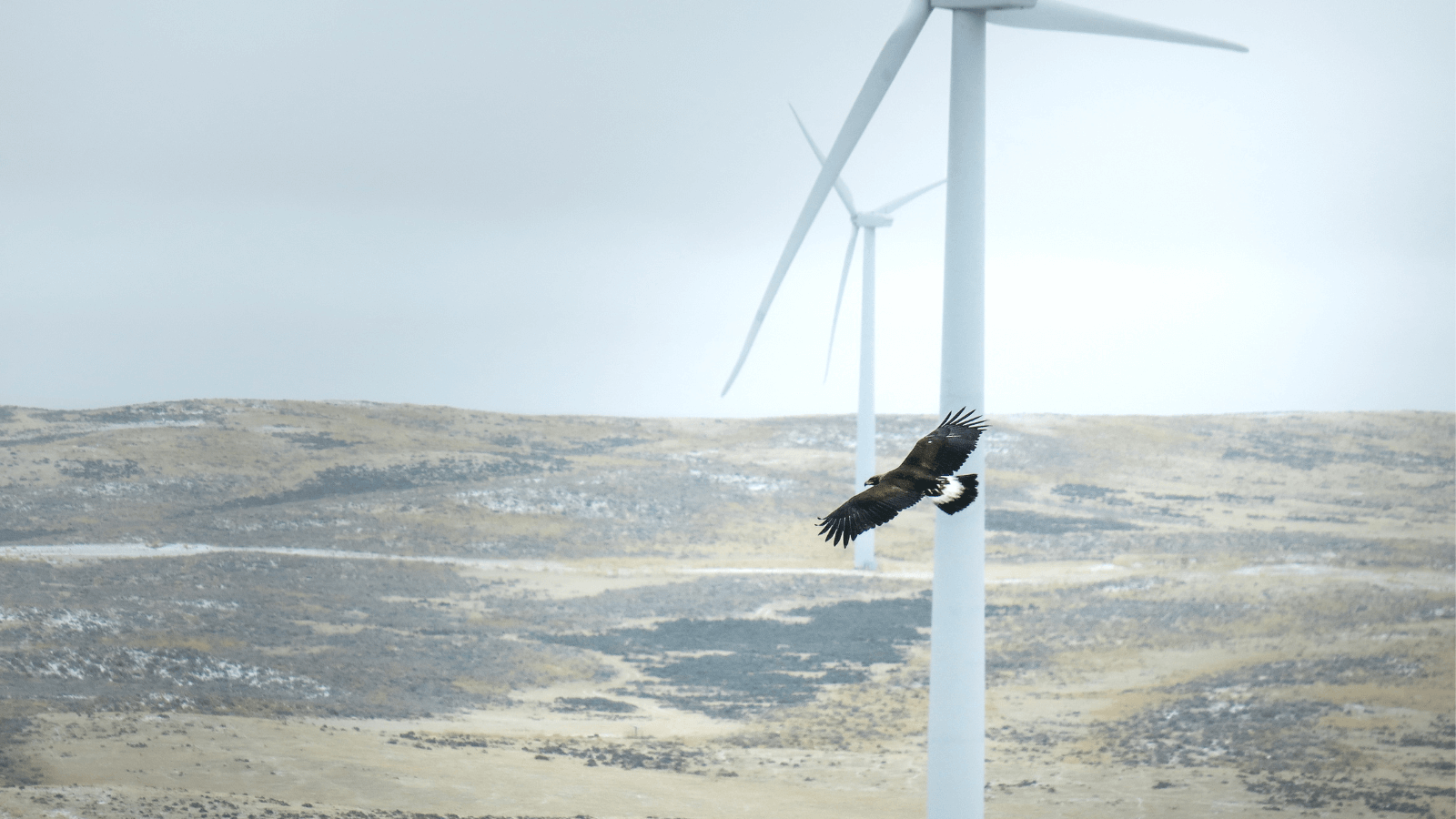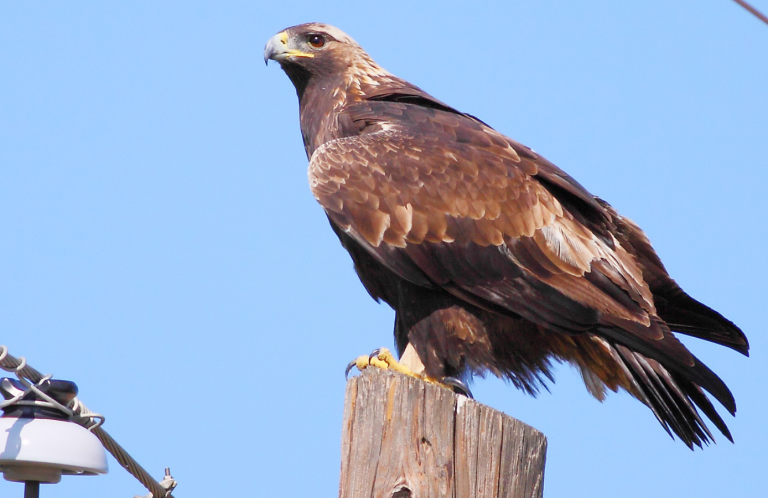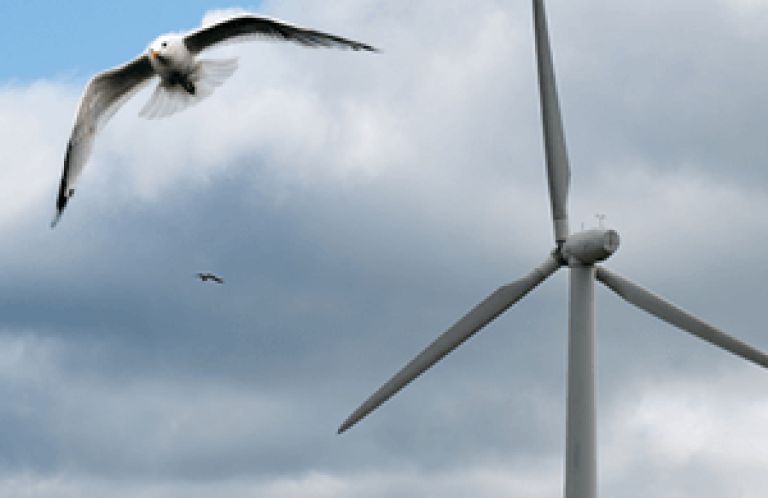For Golden Eagles, It's Poorly Sited Wind Turbines that Spell Trouble

Five years ago, an astonishing study co-authored by ABC confirmed a net loss of nearly 3 billion birds over a mere 50 years in the U.S. and Canada. The population declines documented in the report are widely distributed across almost every group of birds, affecting well-traveled migratory shorebirds and common backyard birds alike. That represents a decline of nearly 30 percent in the total population of birds in North America.
Habitat loss stands out as a threat to all birds: Any bird that loses its home is going to have a harder time surviving. But it's more difficult to contextualize the severity of other human-caused threats that are contributing to an overall decrease in bird populations, like free-roaming domestic cats, window collisions, pesticides and toxins, illegal shooting, electrocutions, and collisions with wind turbines.
While the raw bird mortality data helps us prioritize advocacy on a subset of threats, those figures don't tell the whole story. A given threat can appear to affect a comparatively low number of total birds but have a dramatically disproportionate impact on a specific species. For instance, the estimated median mortality caused by feral and free-roaming domestic cats in the U.S. is 2.4 billion birds annually, while wind turbines kill between 700,000 and 1 million birds currently. This would suggest bird advocates should spend nearly all of their efforts on mitigating cat impacts. However, these data and the resulting advocacy actions are incomplete without some species-specific context.

Let's take the Golden Eagle as an example. Over the past few decades, more than 2,000 Golden Eagle deaths by wind turbines have been documented in the U.S. Thousands more are undocumented, or not available to the public. While nowhere near the staggering 2.4 billion birds lost to cats annually, 2,000 eagles is a lot of Golden Eagles! For context, there are only about 31,800 Golden Eagles in North America, and they are likely on the decline. Additionally, there have been zero documented cases of Golden Eagles killed by free-roaming cats.
In addition to species-level concerns, comparing raw bird mortality numbers leaves out another critical factor: the age of the bird. Collisions with wind turbines account for a much larger share of adult mortality than for young birds. Turbines remove reproductive-age birds from a shrinking population, hindering the species' chances of recovering and rebounding.
While we must work diligently to reduce bird mortalities caused by cats (and ABC does!), we must also ensure negative aspects of wind energy development — and all other threats to birds — are addressed or we will leave species like the Golden Eagle on an extinction trajectory.
Bird-Smart Wind Can Work
The turbines that are killing Golden Eagles were constructed as an answer to the challenges of climate change. Unfortunately, these losses may be compounding: Golden Eagles are projected to continue to lose more habitat, but they are also dying in unsustainable numbers due to wind turbines sited in areas important to eagles.
It's clear that wind energy can be dangerous for birds, but climate change poses existential threats, too. Siting wind turbines in areas where threats to birds are minimized can provide a counter to climate change while reducing the risk eagles and other birds face. It is a difficult but important balance.
ABC advocates for proposed wind energy projects to factor in birds when making decisions about where to place turbines. Our Bird-Smart Wind Energy program encourages projects to adhere to several core principles to minimize bird fatalities from wind development. These include properly siting projects and assessing risks before construction, committing to transparency in monitoring for deaths post-construction, and calculating compensation for the loss of birds, particularly those that are federally protected. Our Wind Risk Assessment Map shows areas where wind development should be avoided; these are places where birds vulnerable to collisions with turbines are most highly concentrated and where migratory paths are located.
New approaches are being developed to curtail the potential hazards of wind turbines, including the use of artificial intelligence (AI). In Wyoming, AI camera systems can identify approaching eagles and trigger the slowing or stopping of relevant turbines' blades, resulting in more than an 80 percent reduction in collision rates. Similar gains have been shown for these systems with vulture species. Unfortunately, these systems are still only in use in a few places. While not completely eliminating the risk to birds, this research holds promise for a safer wind energy industry.
Managing Multiple Threats
Returning to the debate of what threat matters most — domestic cats versus turbines — context is also important. Cats themselves are not the enemies: Though they are the number one human-caused source of direct mortality to birds, they are simply doing what comes naturally to them. As with other threats, people are the problem. Domestic cats were introduced to the North American landscape, and they hunt native wildlife that are not necessarily adapted to avoid predation. Cats that are kept indoors or have enriching experiences outside while under the careful supervision of their owners are not an issue for birds.
Those of us who love our feline friends couldn't imagine a world without their companionship, but we must recognize that the more than 100 million unowned and free-roaming cats in the U.S. pose a very real threat to birds. That is why ABC encourages responsible cat ownership and advocates for policies that treat free-roaming cats more like dogs to mitigate the harm they can do to birds.
Similarly, wind turbines are not the enemy. Wind energy is an important component of the effort to chart a course away from carbon-producing energy sources, toward a more sustainable future. Climate change is here. It's vital that we transition to clean renewable energy — and as the example of Golden Eagle shows, it's important that we minimize the risk to birds as we do it. Building more wind facilities in high-risk areas will make this threat more significant, particularly for birds like the Golden Eagle, but we know we can be bird-smart when it comes to wind energy.
Next time you see a list of threats to birds and the numbers of birds killed by those individual threats, I hope you'll recall the complexity behind those simple statistics. No threat exists in isolation, and no bird species is at risk from only one threat. The same bird species that have nothing to fear from cats die by the thousands by colliding with turbines. Focusing our energies and resources on one threat at the expense of others will lead to species — often those closest to a tipping point, like the Golden Eagle — slipping through the cracks.



















































